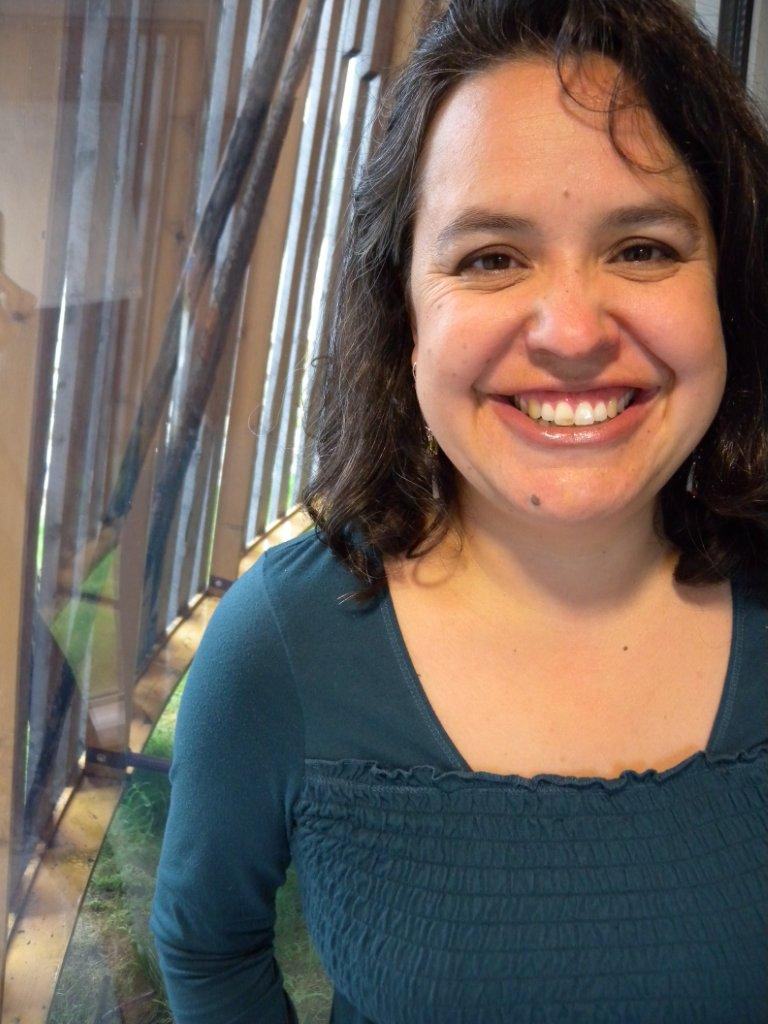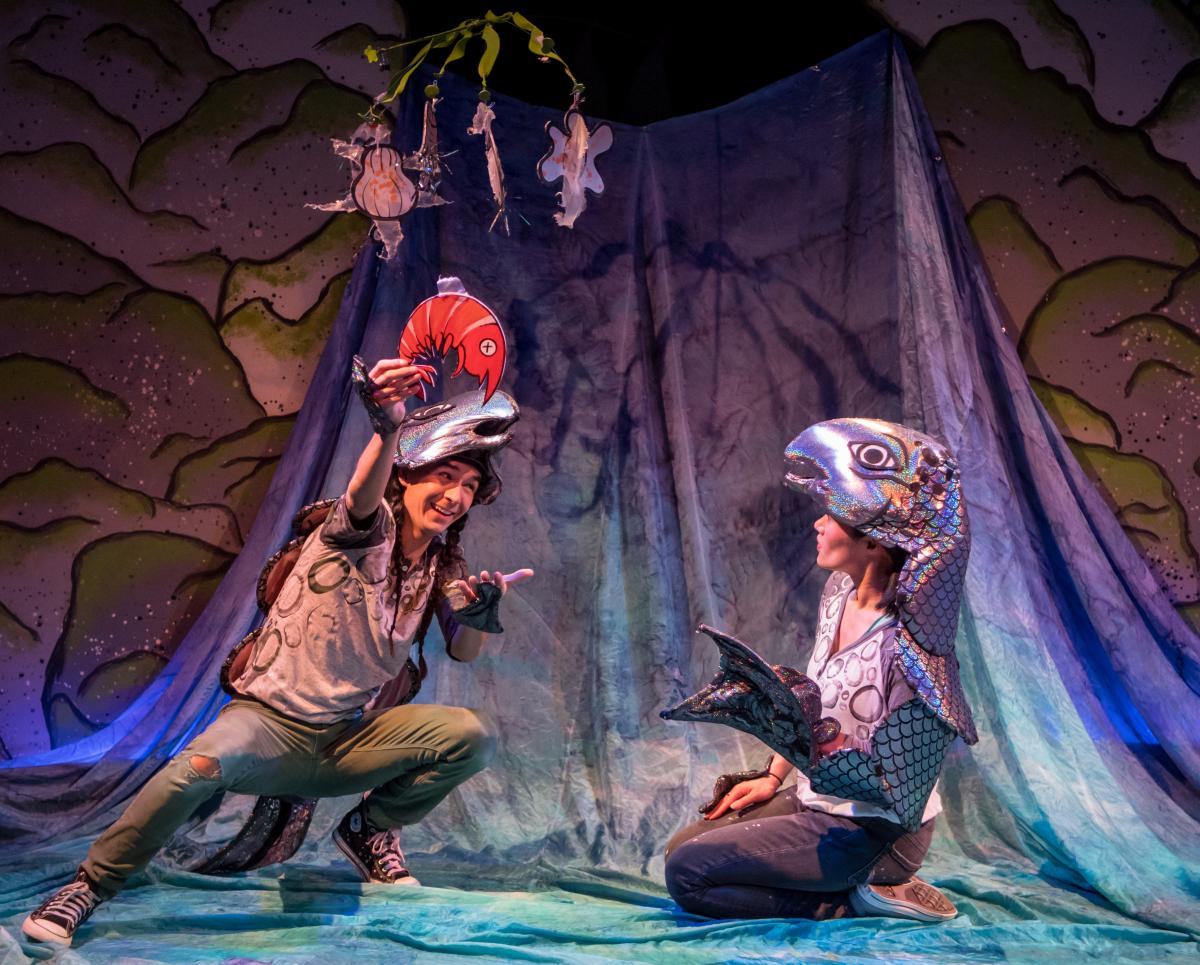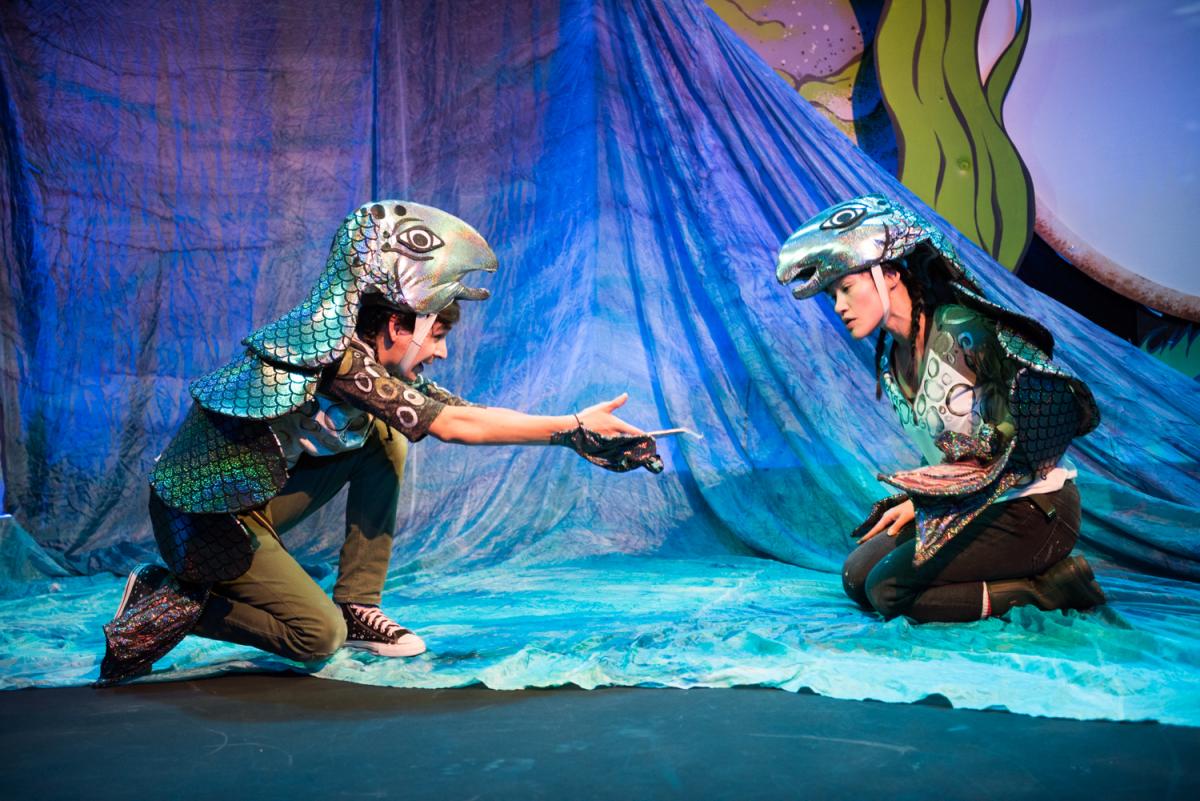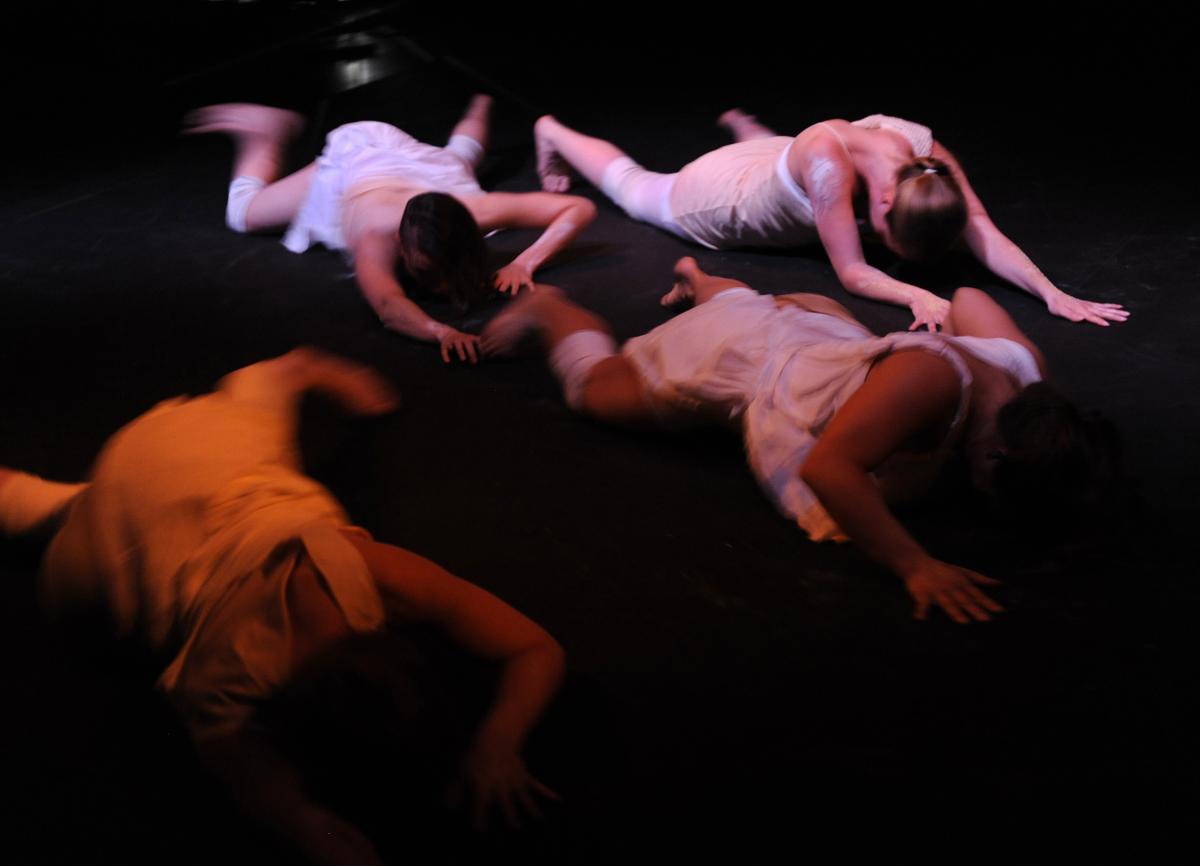April 16, 2018

Ontario Presents and its member presenting organizations recognize the importance of presenting Indigenous artists, stories and culture as part of their presenting practice. As we continue to encourage the respectful presentation of Indigenous art, we will be featuring an Indigenous artist each month in our e-newsletter and blog. Our sincere thanks to Denise Bolduc for conceiving of and continuing to support this Spotlight Series.
Spotlights are developed with the artist, and are intended simply to share the artist’s work and foster greater awareness and understanding of the strength and diversity of Indigenous art available in Ontario and beyond.
This month we sat down with Michelle Olson of Raven Spirit Dance.
To start off, can you tell us a bit about yourself and your artistic practice?
I am the Artistic Director of Raven Spirit Dance. We’ve been around for about thirteen years, focusing on contemporary Indigenous performance and contemporary Indigenous practice.
Throughout the years, I’ve been trying to figure out exactly what that is. For me, right now, it’s about tapping into an understanding and a knowing of how to make work within a context that holds your values and your worldview… The way your worldview and values affect how you create and what you create.
I also want to share with Indigenous artists ways that they can tap into their own process in the same way, that there is a lens that they can put on the work that is the Indigenous lens.
I know for myself, growing up and going to university and school, that is stripped away. Pretty much everything is stripped away, and there’s this sort of autonomy of the individual making artistic choices. When really you’re making choices within a larger context that you’re not acknowledging; and that context is the Western worldview.

I really want to encourage Indigenous artists to know that there’s a lot more that they can access. I think it’s also important that non-Indigenous artists know that there’s a different way of seeing things and being in the work that they can access as well.
Speaking of stepping away from the individual and working with other Indigenous artists- I noticed a short documentary (Confluence) online about your collaboration with four other female, Indigenous artists. How did that collaboration come about?
It started on a panel- I was sitting on a cultural diversity panel with Margaret Grenier, who is the artistic director of Dancers of Damelahamid. We were sitting right beside each other and she would answer a question and I would think “Oh, that’s exactly how I feel too.”
We started talking and realized that even though the forms that we express our work through are a bit different (hers is a traditional dance form and mine is a contemporary dance form) that there were some really strong links and strong connections about why we do the work and how we do the work.
So we wanted to be able to share space, understand those connections, and see if there was a way that we could create a language, a movement language, that could hold both of our experiences and the forms that we work in.
And then you brought other collaborators into the process?
Yes, Starr Muranko is an artistic associate with Raven Spirit Dance. She’s created work for the company as well- she’s a choreographer. Jeannette Kotowitch has been a choreographer with both companies, and creates her own work as well. And then Yvette Nolan was our dramaturg for the whole process so far.

So is this process developing towards a piece, or is it more of a free creative process?
Well right now it’s a creative process. My desire is for it to be a piece. It’s just finding the next stages of what that new discovery is. We’ve discovered a territory that is very clear and that we can really start to draw from to create a piece. We just have to see how it moves forward.
Just because we are very busy! Margaret runs her own festival and her own company, and she’s creating her own work as well, and touring. So we just have to re-negotiate what that looks like and how it moves forward.
Absolutely, you have so much going on, from performing, to choreographing, to running Raven Spirit, and more. How do you balance all of that?
I would say not very well! And to boot I have two kids!
Part of it is – this is probably the issue of a lot of artists these days, they’re having to produce their own work, they’re having to be their own administrator, they’re having to perform. All those things… it’s really a lot to manage. It’s not ideal.
For myself at this point, I really want to make sure that I say yes to the things that I really want to do, and pursue those things. Even though other opportunities may come up, I think it’s just conservation of energy.
And I really learned that this year I think. Because of producing Salmon Girl, and we’re opening a show next week (Earth Song, with Dance Allsorts), and then a week later I fly to Toronto for Salmon Girl.

Yes, you are bringing Salmon Girl, a dance-drama for young audiences, to Toronto, St. Catharines, and Brantford. How did that piece develop?
Well I had a conversation with Quelemia Sparrow, who’s a Musquem First Nation writer, actor, playwright, director. About six years ago, I asked if she’d be interested in developing the piece with me.
So we started on a process… she came up to Dawson City, my First Nation (Tr’ondek Hwech’in First Nation), for a couple weeks. And we just did some research, talked about stories, talked about how we could connect salmon stories from her community to the salmon stories that we have up north.
Very similar things happen where someone falls into the river and turns into a salmon, and then because of this transformation they are given information and knowledge about how to care for the waters and the oceans. So the piece itself is a bit of a hybrid of those stories.
And was the idea always for it to be a young audience piece? That was something you were interested in pursuing?
It was. We had done a piece years ago, it was one of the first pieces for the company, for young audiences. But it was something that we wanted to explore, and just see what that form would be like.
And it seems to be a good fit, particularly with the lessons that young people can take away from the story.
I think the traditional teachings are so amazing in what they offer to the listener, to the child that’s listening or the adult that’s listening, that it’s nice to be able to share it.

We had a good run here just recently in Vancouver, and everyone just really took away a lot. There was lots of great feedback around the work and how it helps everyone reframe their position within the ecology of our world.
We’ve already talked about several projects that are keeping you busy, do you have anything else coming up that you’d like to share about?
Well we will be back in Ontario, back in Toronto, in February with Gathering Light, a piece that I did about five years ago. We’re remounting that piece and performing it at Native Earth’s Aki Studio.
Gathering Light is based on the concept of a seed growing into a flower. It kind of follows that journey, that pathway, the idea of gathering light with petals. We really found it was a way of tracing a woman’s experience, in terms of a sense of ritual, a sense of loss, a sense of growth.
I’m so glad to be able to re-mount this piece. I kind of longed to get back into it, get it on it’s feet and dig deep. I think there’s something that’s really transformative about this piece; it gets you into a really deep place in yourself. It’s really interesting… whether people want to go there or not. Some people love it, some people are like, “What? I didn’t want to feel that!”
Well that’s a good piece of art, it takes people to a place they weren’t expecting.
Yes, totally! And it’s nice because I feel like it has an aspect of ceremony. Even though it’s not ceremony, but it has that aspect where it’s about taking this group of people through a process, through an experience, and hopefully having them shift or change by the end of it.
I’m always moved by work when I feel like I’ve opened up a little more or my perspective has shifted. That’s what I most value in the work that I see, something that makes me feel something just a bit deeper.
Our thanks to Michelle for sitting down with us.
Find out more about Raven Spirit Dance on their website here, follow on Twitter @rsdancecompany, or on Facebook here.
Photo Credits (top to bottom): Glenda Bolt, Erik Zennström, Erik Zennström, Chris Randle, Chris Randle

